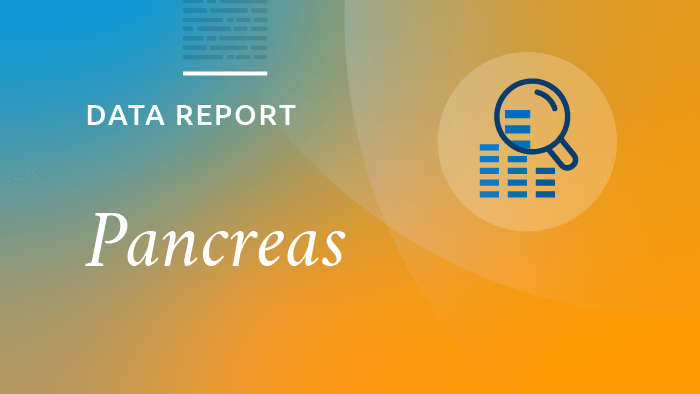A new data monitoring report contains key measures of the current pancreas distribution system, which was implemented March 15, 2021, by the Organ Procurement and Transplantation Network (OPTN).
This most recent monitoring report presents two full years of post-implementation data. The removal of donation and service area (DSA) and OPTN region from pancreas allocation has resulted in broader distribution of pancreata. More pancreas and kidney-pancreas transplants occurred at hospitals outside the recovering hospital’s DSA, but the majority stayed within 250 nautical miles (NM) of the donor hospital.
Some other key takeaways from the report include:
- Overall transplant rate* decreased slightly for pancreas (63 transplants pre-policy vs. 60 post-policy) and kidney-pancreas (103 pre-policy vs. 96 post-policy); these changes were not statistically significant.
- There was a notable but not statistically significant increase in the transplant rate for highly-sensitized KP candidates with CPRA of 80-97 percent.
- There was a statistically significant decrease in the kidney-pancreas transplant rate for White, Non-Hispanic candidates; there were no statistically significant differences in the kidney-pancreas transplant rates for non-White racial/ethnic groups and no significant differences in pancreas transplant rates within racial/ethnic groups.
- There were no statistically significant differences in pancreas or kidney-pancreas transplant rates by candidate age group, gender, blood type, or patient sensitization (CPRA) at listing.
- There was little change in median preservation time for pancreas transplants (8.5 hours pre-policy vs 8.6 hours post-policy); median preservation time for kidney-pancreas transplants increased by 48 minutes (9.5 hours vs 10.3 hours).
- There were no statistically significant differences in one-year post-transplant patient or graft survival for pancreas or kidney-pancreas recipients after policy implementation.
The report was presented to the OPTN Pancreas Transplantation Committee on July 10, 2023. While this is the final planned monitoring report as outlined in the policy’s briefing paper, the Committee will continue to monitor these policies and will request additional data monitoring as needed. Previous monitoring reports for these policy changes are available here.
The future state of pancreas allocation
In 2019, the OPTN began work to adopt a single distribution framework that could be adapted to all organ types. This approach, continuous distribution, is a points-based system predicted to increase equity among potential recipients. In 2021, the OPTN Board of Directors unanimously approved lung as the first organ to transition to the new allocation policy; it was implemented on March 9, 2023 (find more details here). Kidney and pancreas organ types are currently moving through a series of steps as the framework is developed for their organ types.
*Transplant rates as expressed by transplants per 100 active patient-years were calculated by dividing the number of all deceased donor pancreas and kidney-pancreas transplants by the number of active years patients spent waiting.

